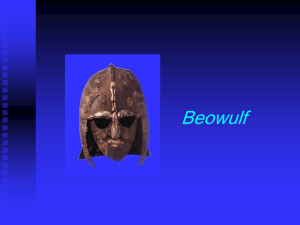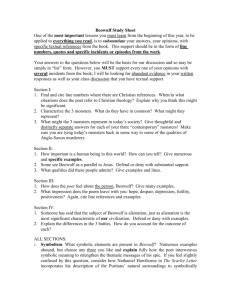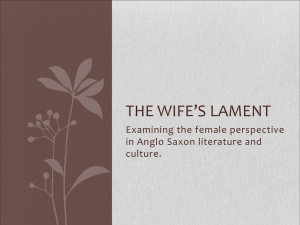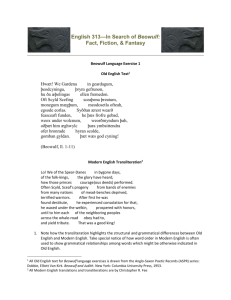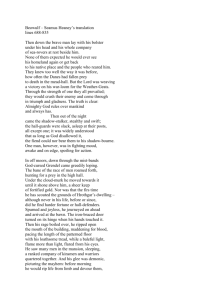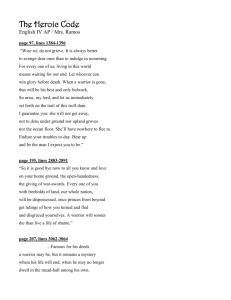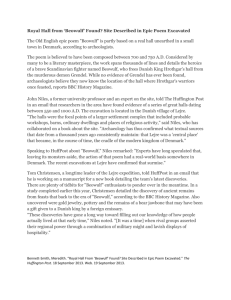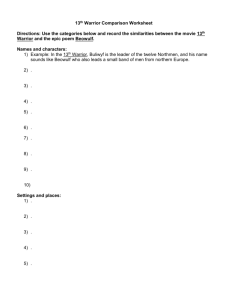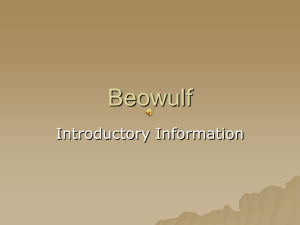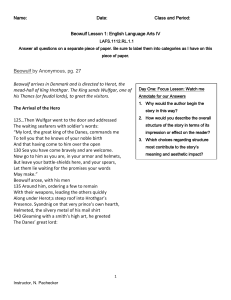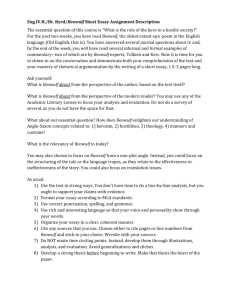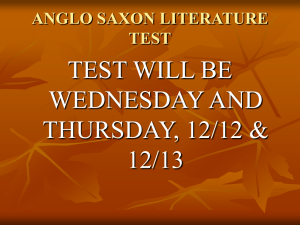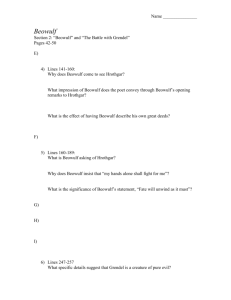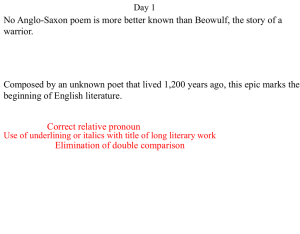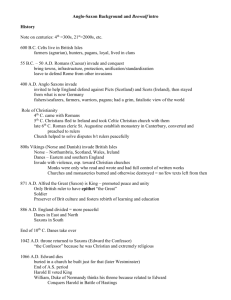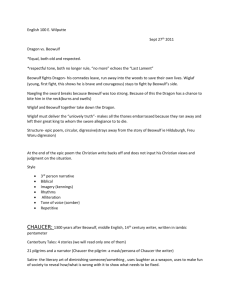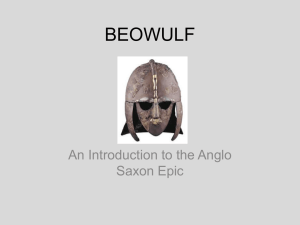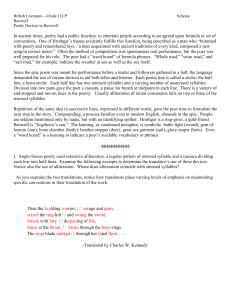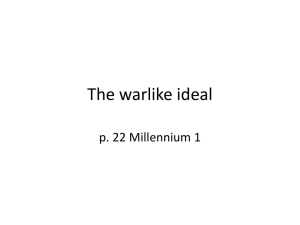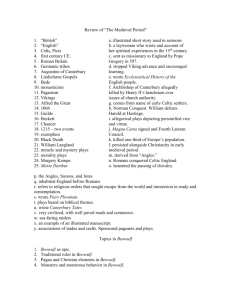Notes Template
advertisement
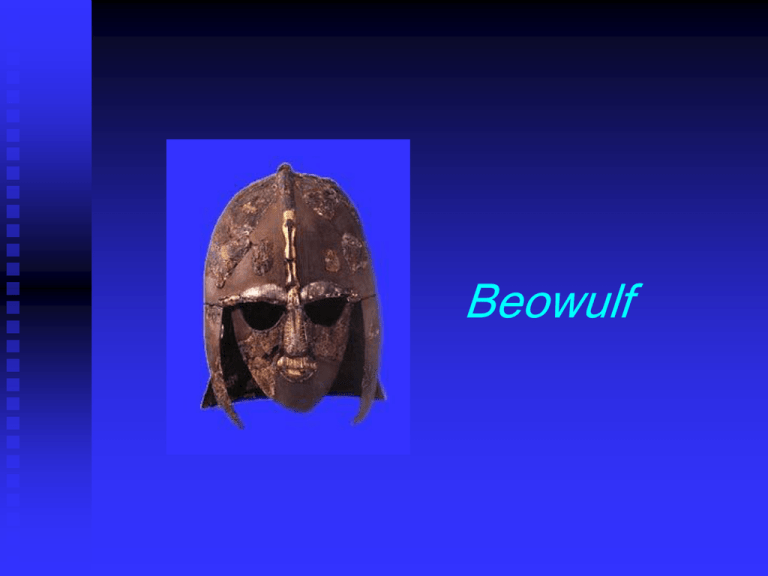
Beowulf I. Historical background 400-600 A.D. -- Angles, Saxons, and Jutes invade (Beowulf set) 410 A.D. – Rome renounces control of Britain 521 A.D. – Hygelac invades the Netherlands 597 A.D. – St. Augustine 625 A.D. – Sutton Hoo 700-950 A.D. -- Christian poet composed the poem II. The manuscript Handwritten by a monk around 1000 A.D. Written in Old English Obtained by Sir Robert Cotton Bound in Cotton Vitellius A.15. Damaged in fire in 1731 Currently at British Museum Available on “The Electronic Beowulf” CD III. Poetic form and devices Alliterative verse Same initial consonants Line halved by caesura Four stresses per line Kenning: compressed metaphor Litotes: ironic understatement Synecdoche: part for whole Metonomy: associated word for word itself IV. Anglo-Saxon values Loyalty Fighting for one’s king Avenging one’s kinsmen Keeping one’s word Generosity -- gifts symbolize bonds Brotherly love -- not romantic love Heroism Physical strength Skill and resourcefulness in battle Courage Public reputation, not private conscience V. Beowulf vocabulary Comitatus: Germanic warrior band (Tacitus) Scop: poet in oral culture (“shaper”) Preserves history Entertains court Spreads hero’s fame Thane (thegn): warrior retainer Wergild: “man-price” Substitute for violence (G won’t pay; H pays for B’s father; paid for Hondscioh; Hrethel can’t get) Wyrd: fate (to the POET = God’s will) VI. The structure of the poem Three fights (Rogers 1955) Grendel Grendel’s mother The dragon Ring structure (Niles 1983) Individual passages Three main combats Example Poem as a whole Inside/order vs. outside/chaos Heorot VII. Why the digressions? To show transience of peace, problem of human evil (Wright, Camargo) To lament loss of community (Niles) To introduce Christian perspective to audience, but not to characters (Osborne) List of digressions VIII. The narrator’s function Historicizing -- customs change (178 ff., 1195-6, 1797-8, 1955-6, 2773-4) Contemporizing -- man’s place in the universe doesn’t change (700-702, 1056-8, 1132-4, 1610-11, 2857-9) Commenting on morality – we learn from the past (20-25, 1534-6, 2166-9, 2168-9, 2541, 2600-01, 3174-5) Putting humanity in perspective -human knowledge is limited (50-52, 159-63) (Greenfield 1976) IX. What about the women? Women make peace, bearing children who create blood ties Wealtheow unites Danes/Helmings Hildeburh unites Danes/Frisians Freawaru intended to unite Danes/Heathobards Women pass the cup at the meadhall, cementing social bonds Women lament loss, don’t avenge X. What is heroism? Strong will? Valor in battle? Concern for others? Are the same traits required for a warrior and for a king? XI. Is Beowulf a hero? Does Beowulf act for selfish motives – glory? treasure? Does Beowulf act for selfless motives – preserving the community? Does Beowulf ever make a raid or start a feud? Does B stand for violence or civilization? Is Beowulf successful as a warrior? As a king? XII. What is the poet’s attitude toward the culture? Does the poet celebrate the culture he depicts and mourn its loss? Does he view it as limited and inferior to another alternative, perhaps Christianity? It affirms vengeance It overvalues glory It depends on a hero References

